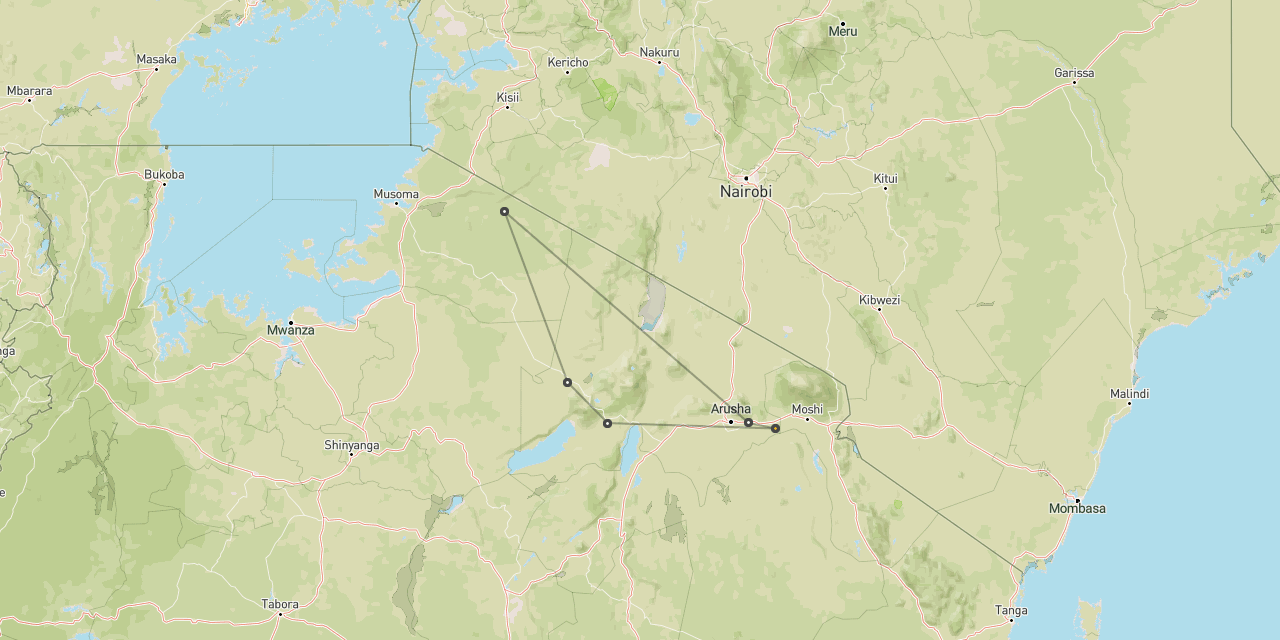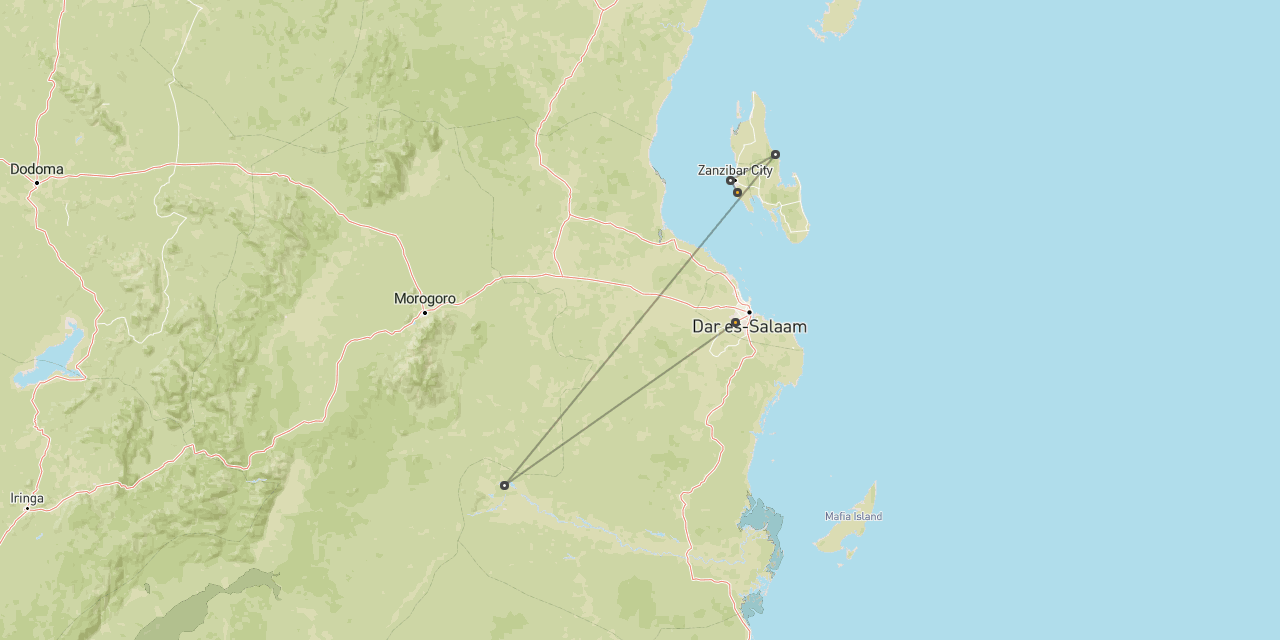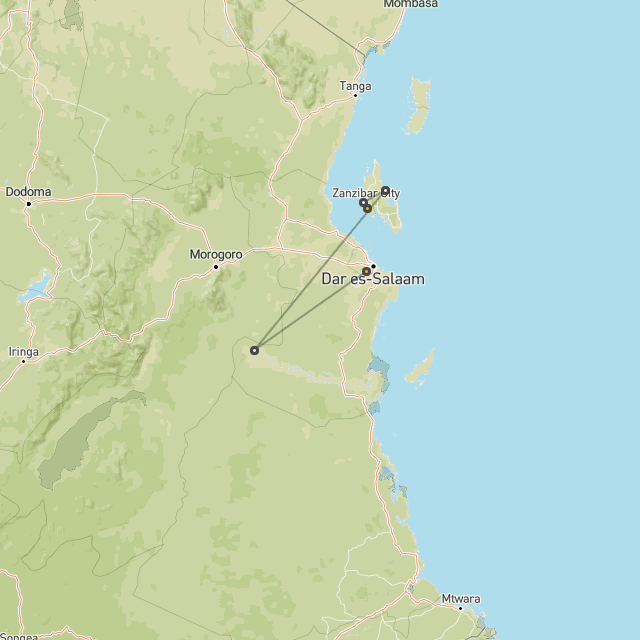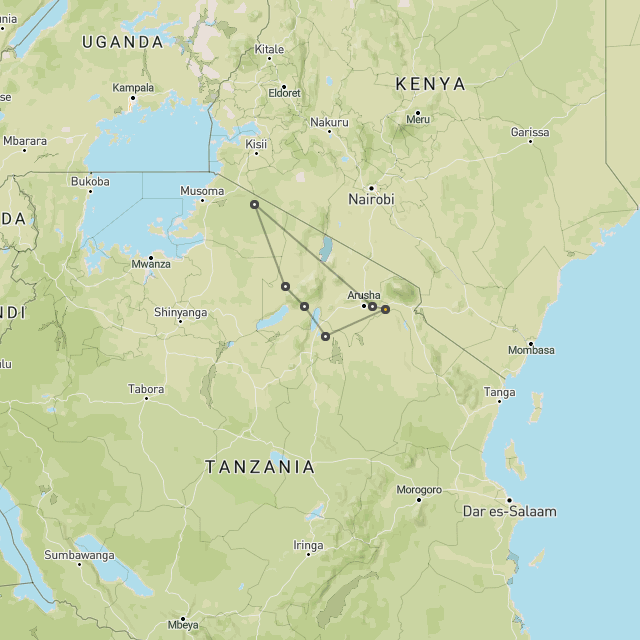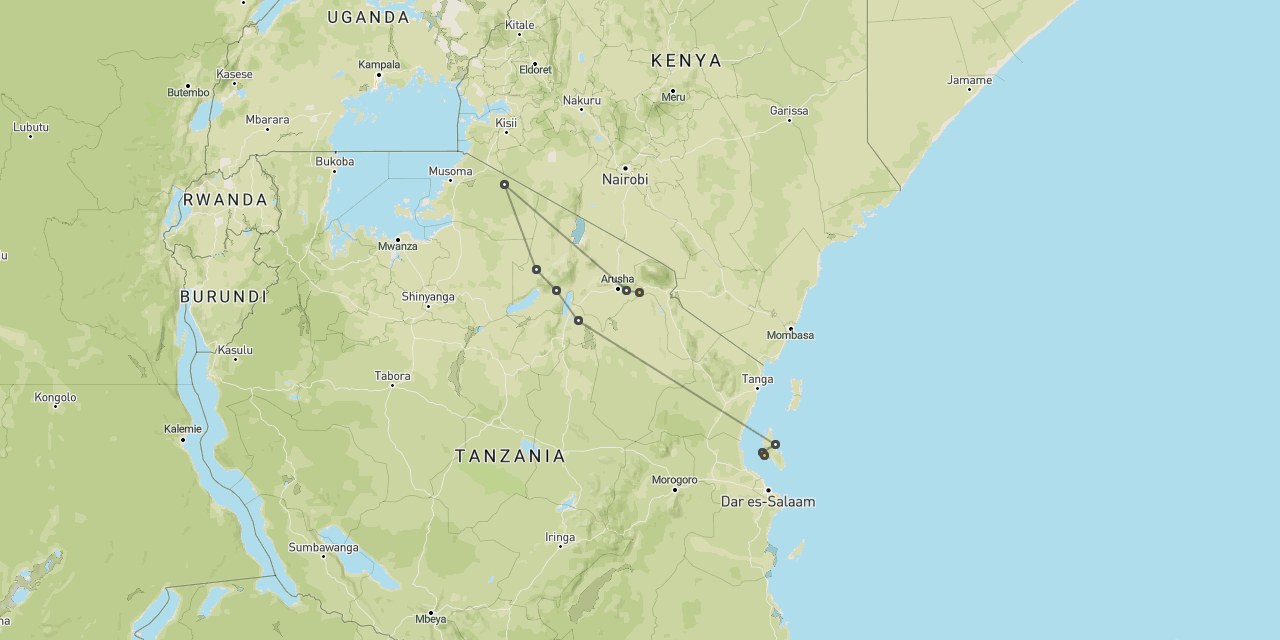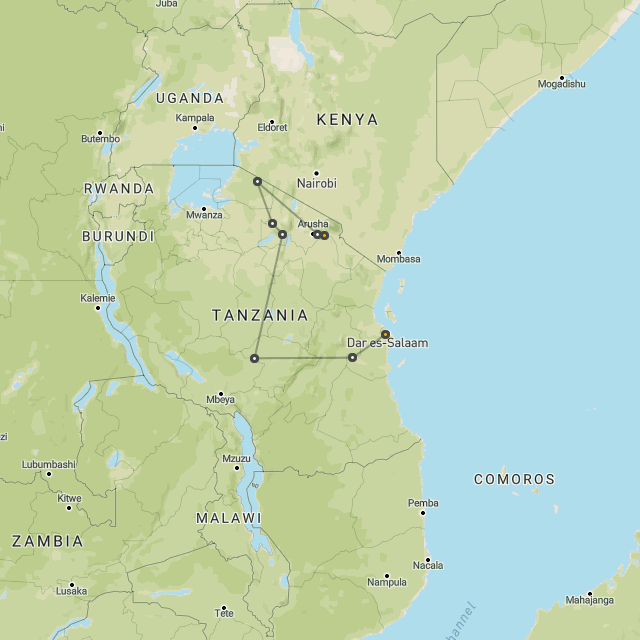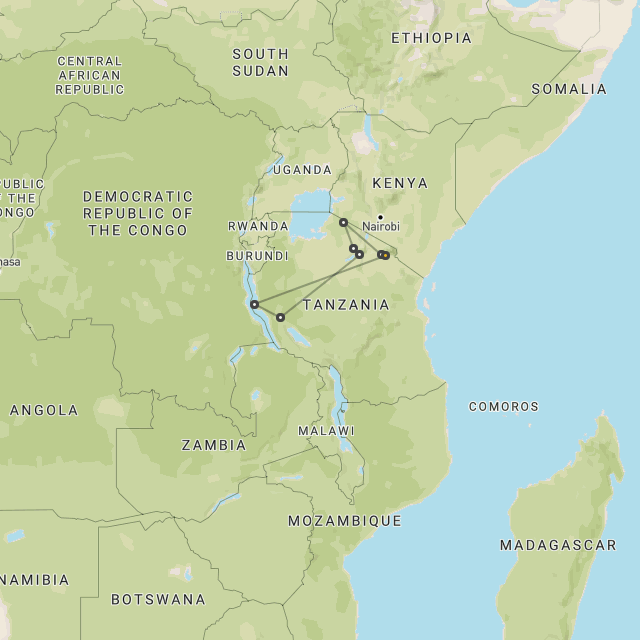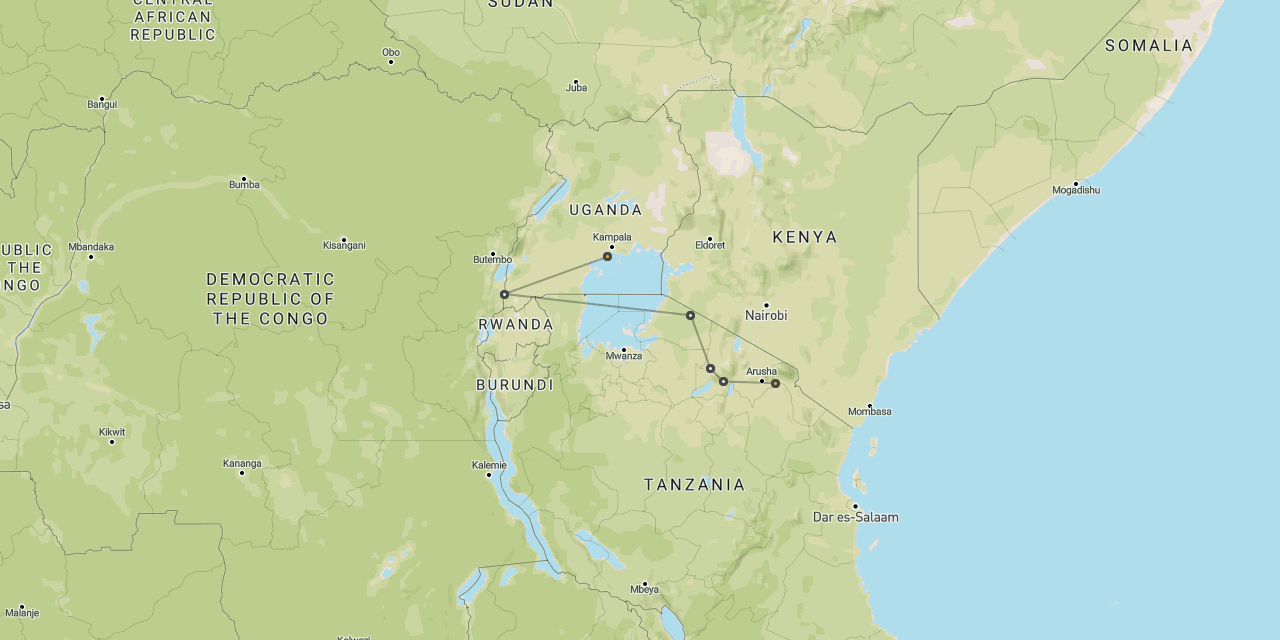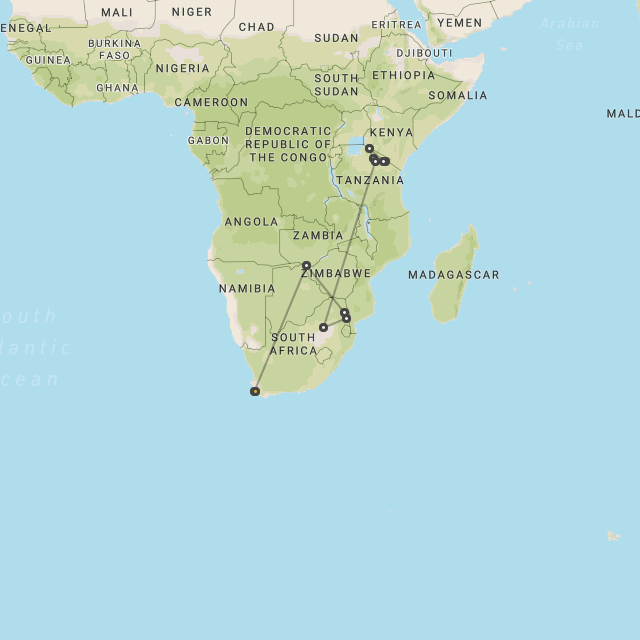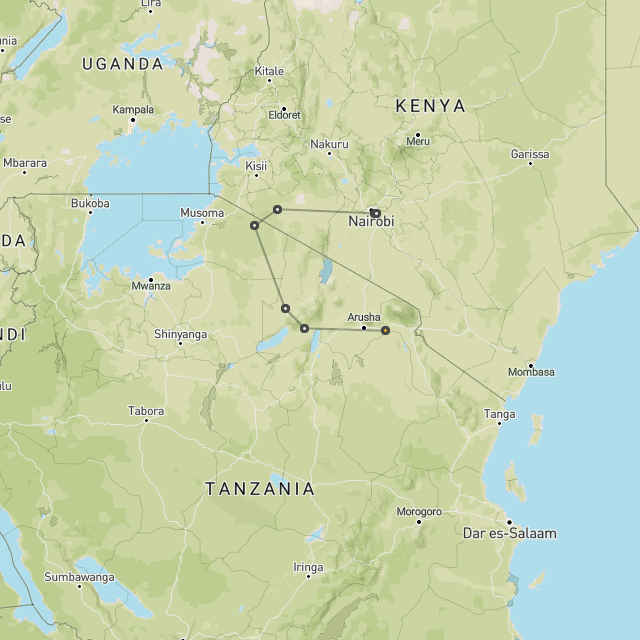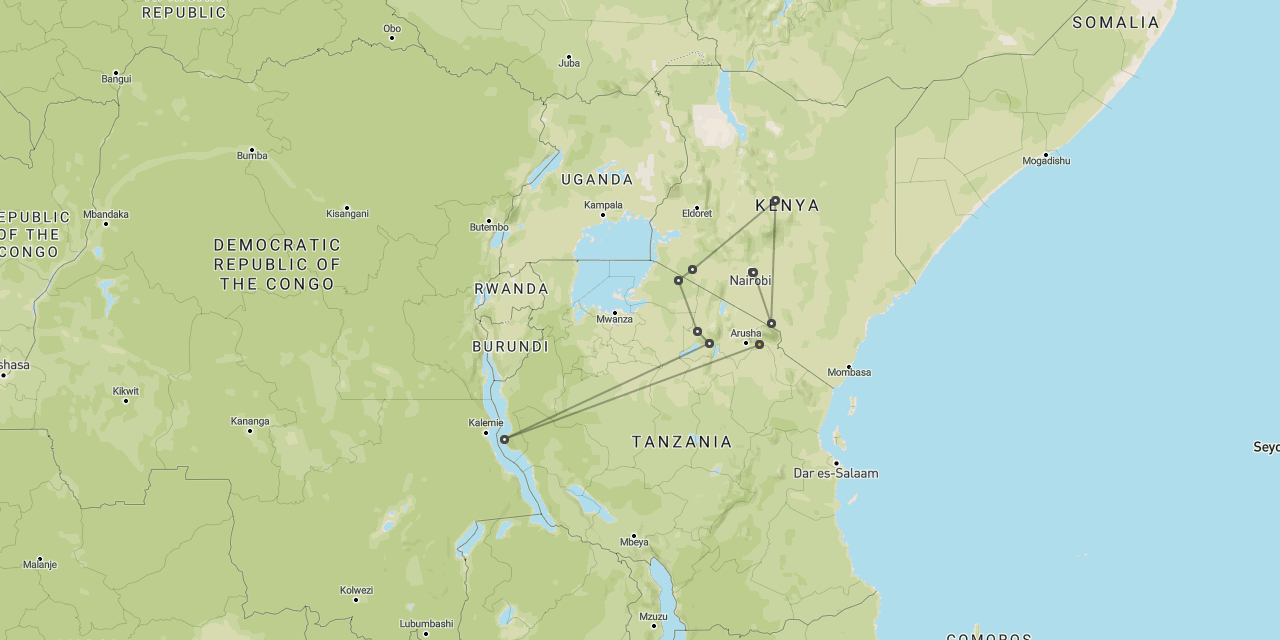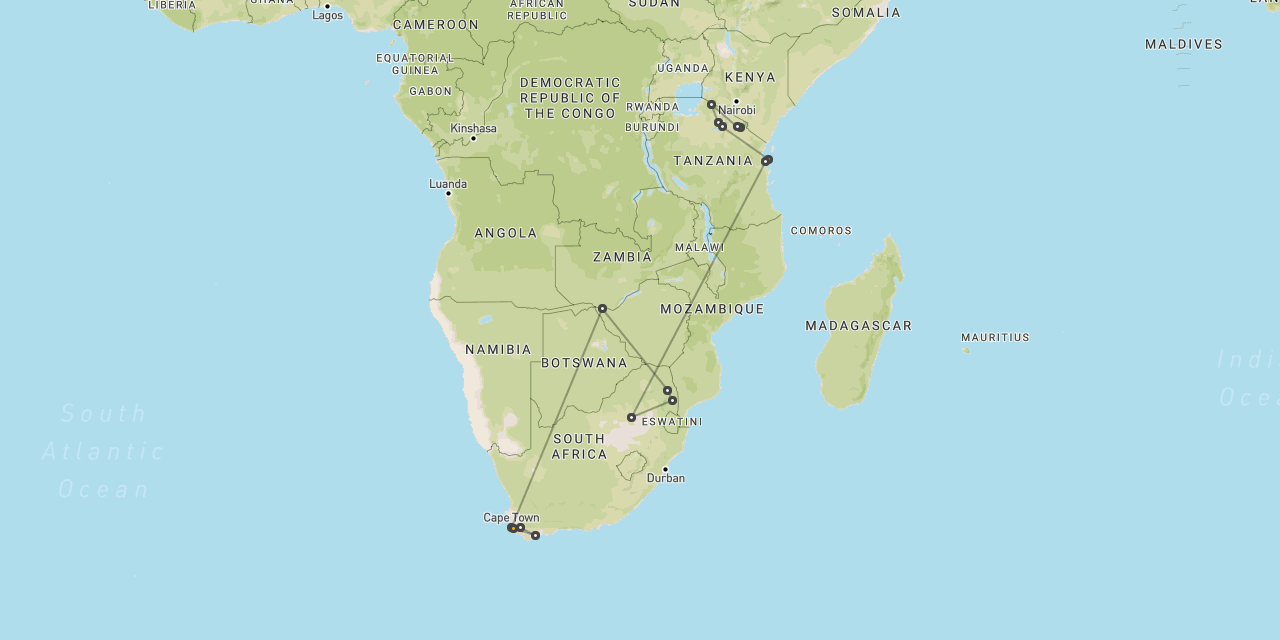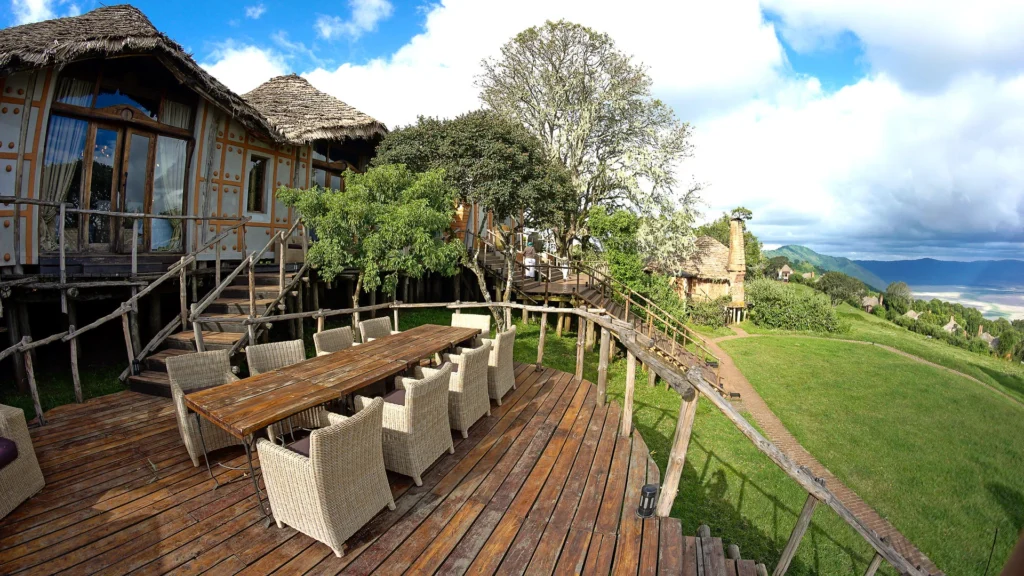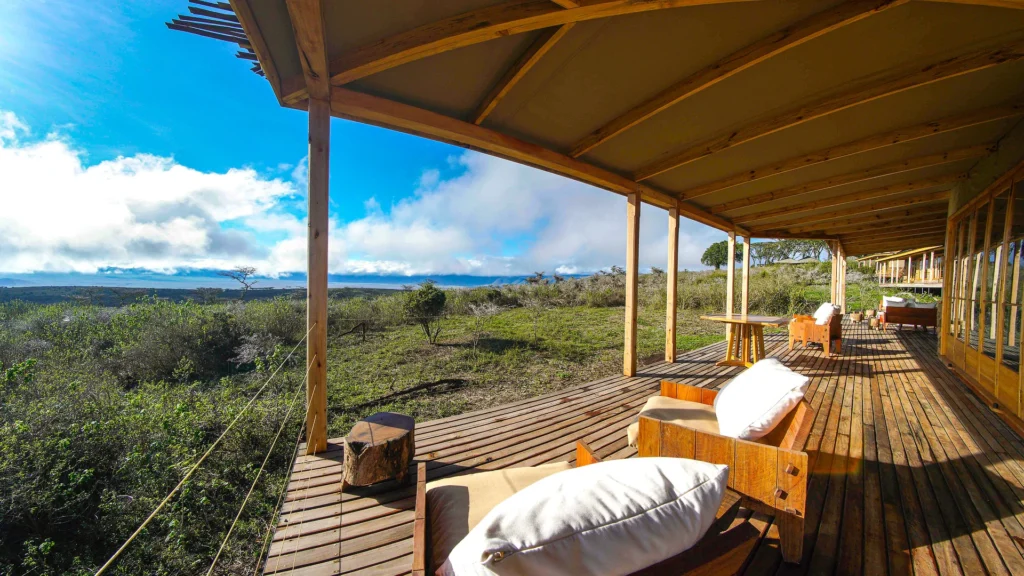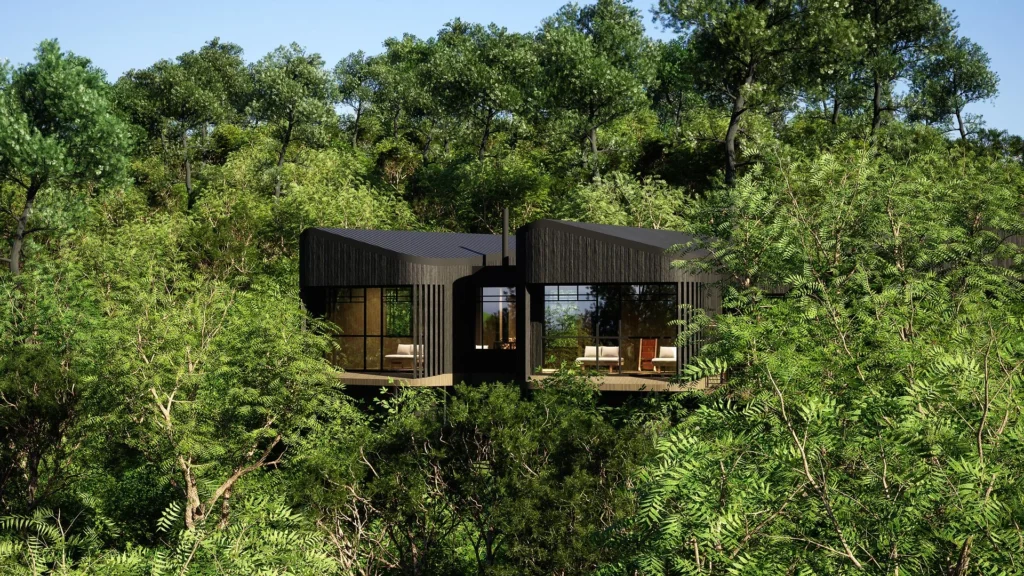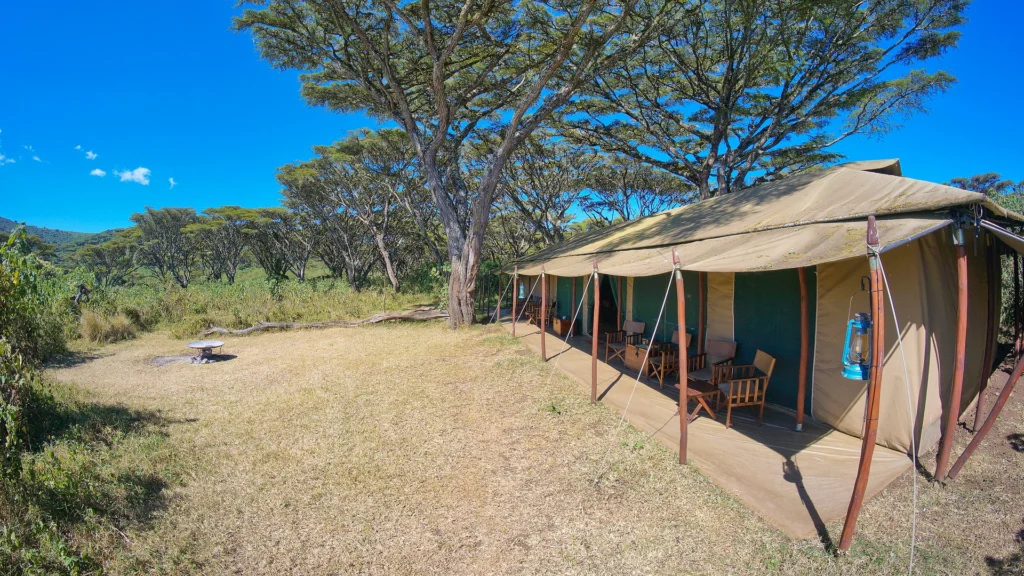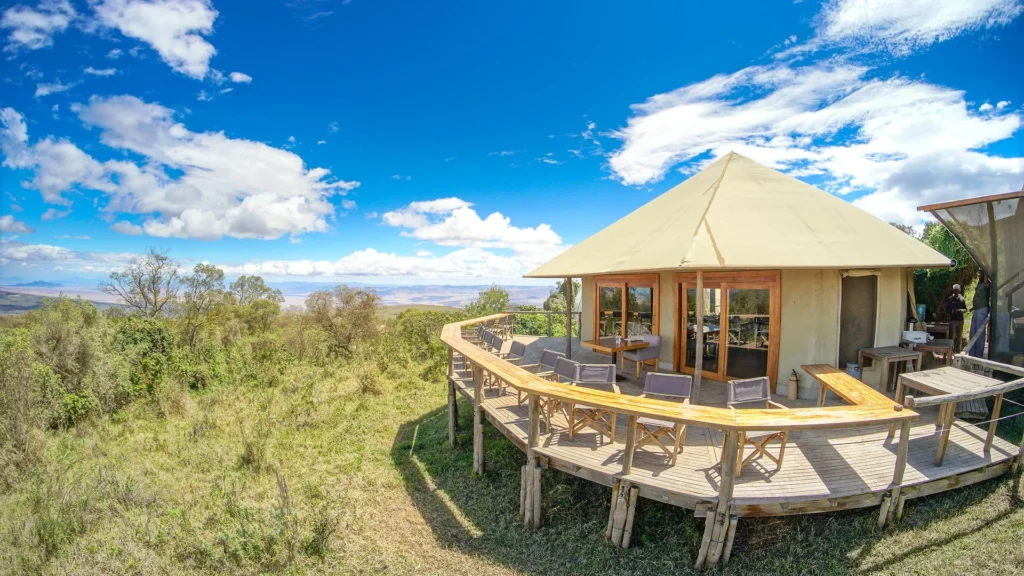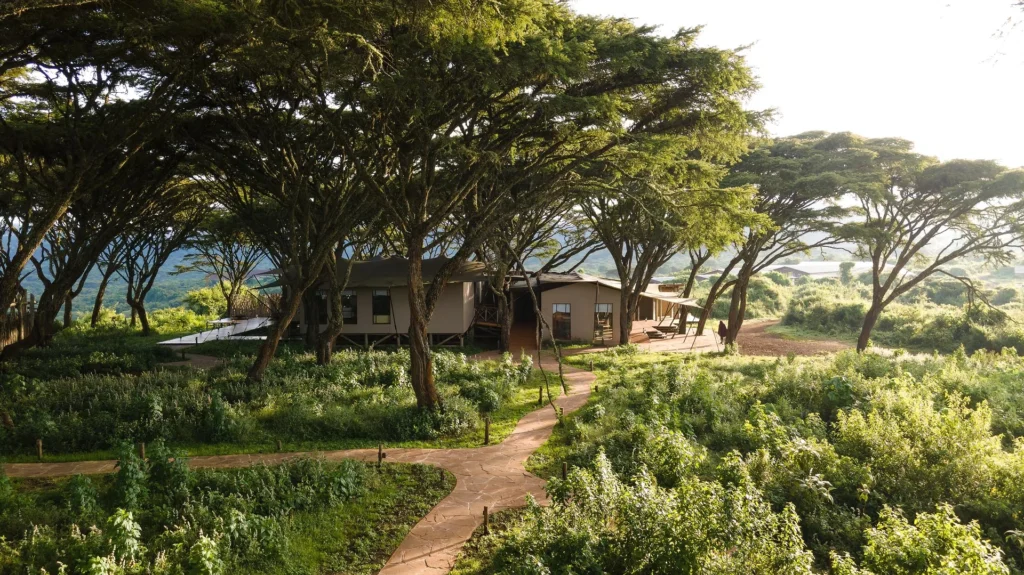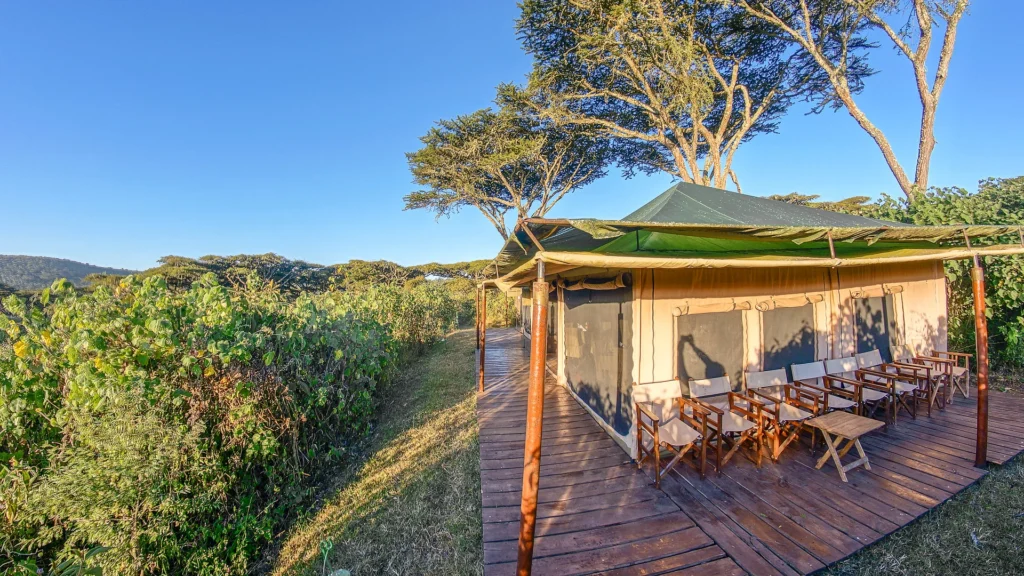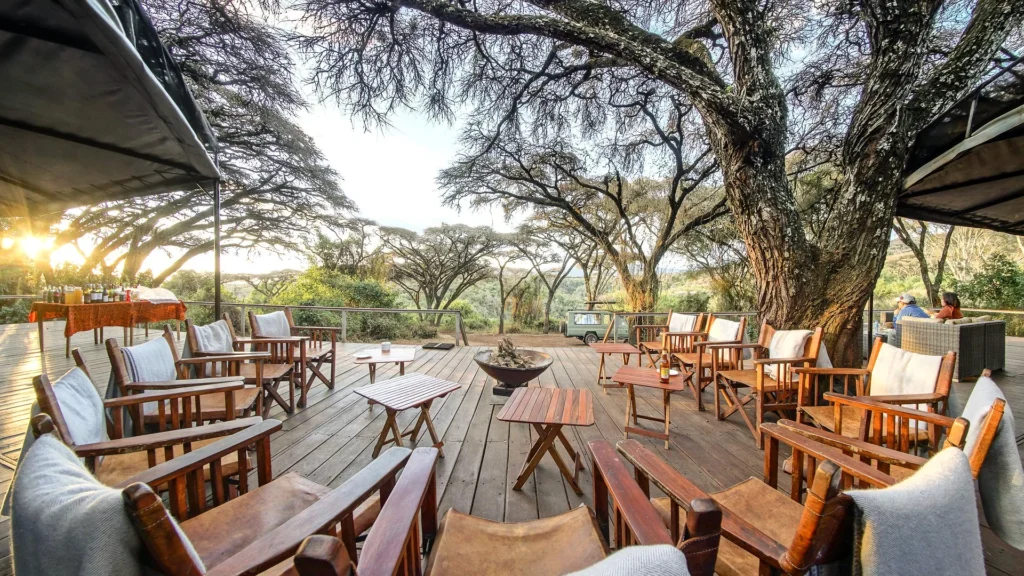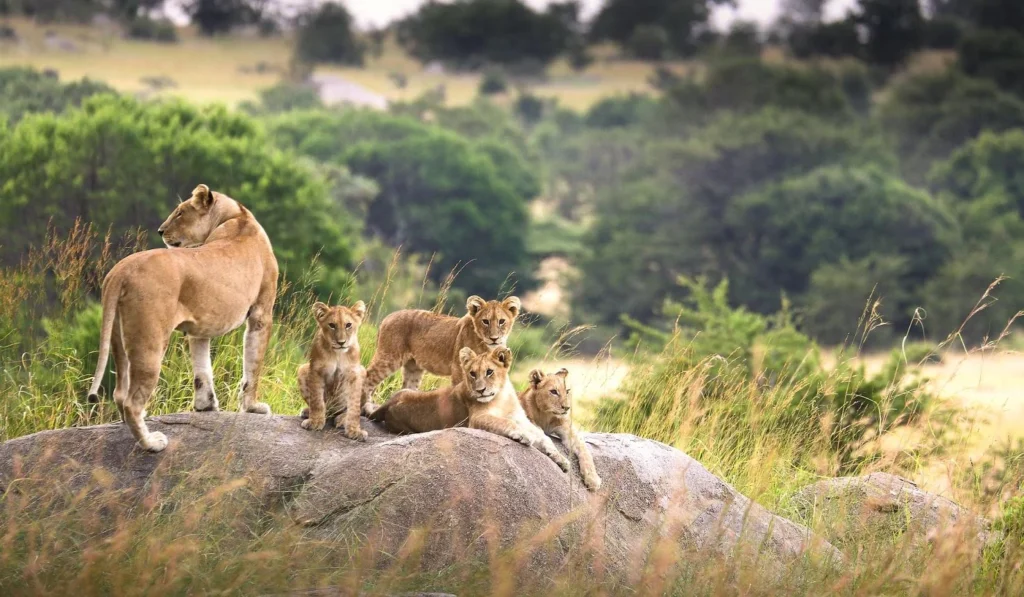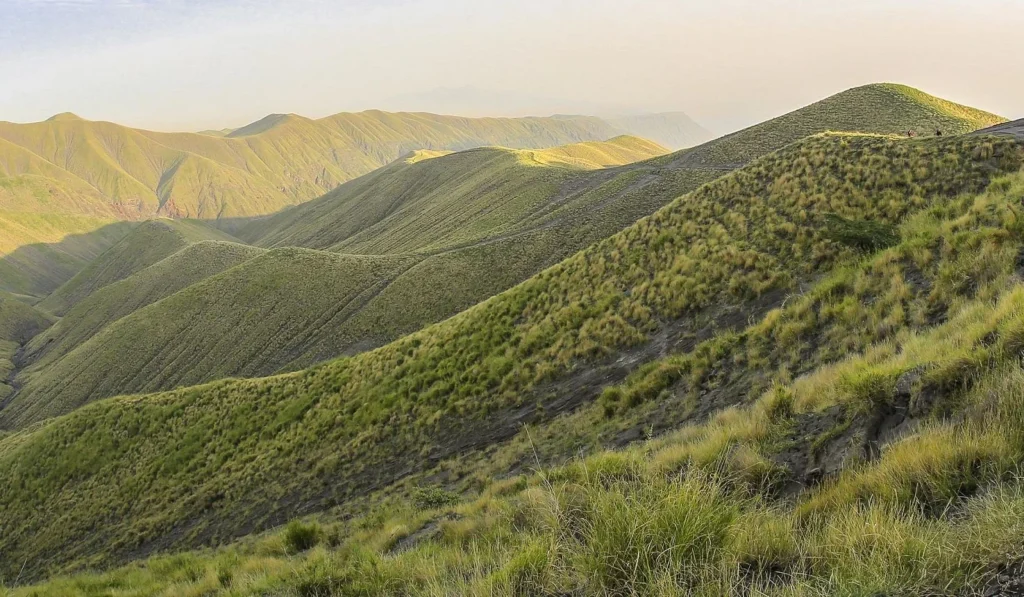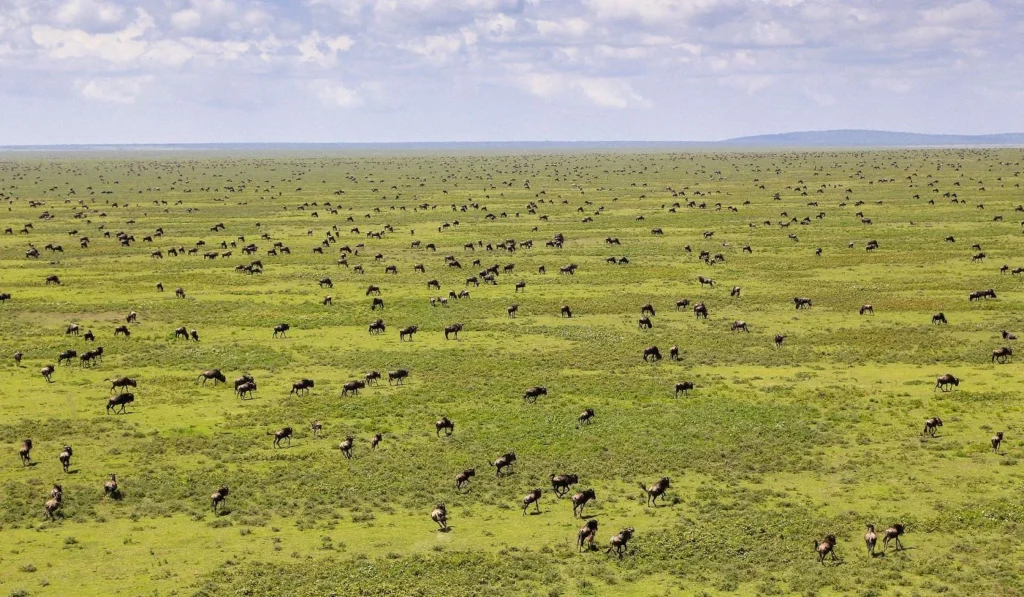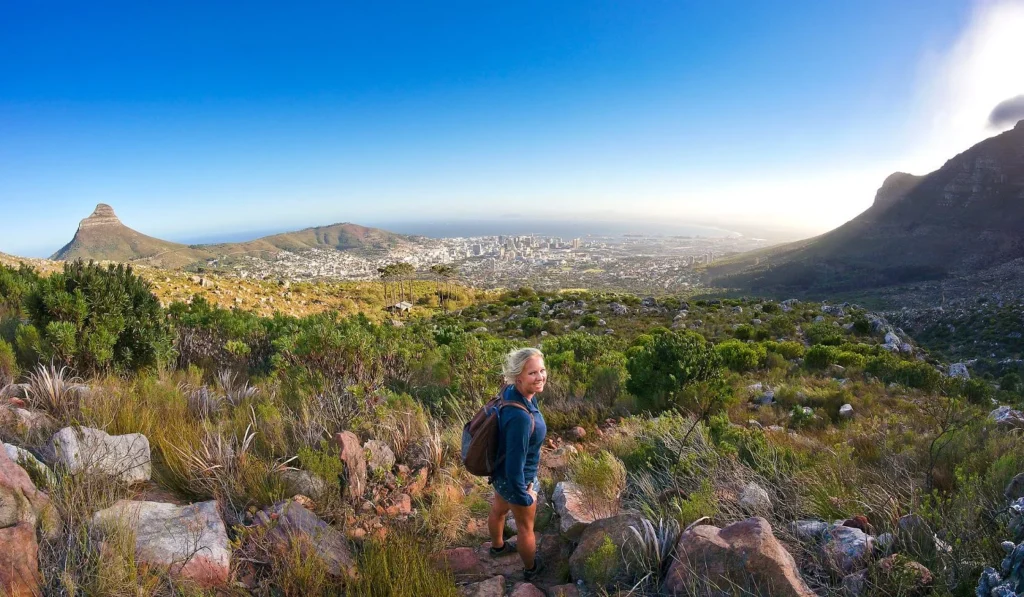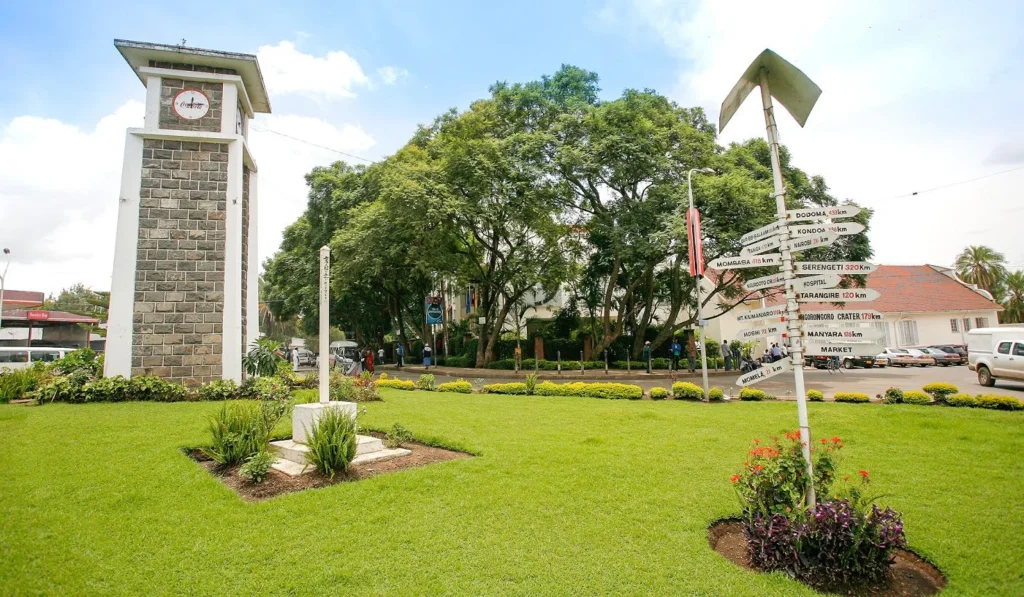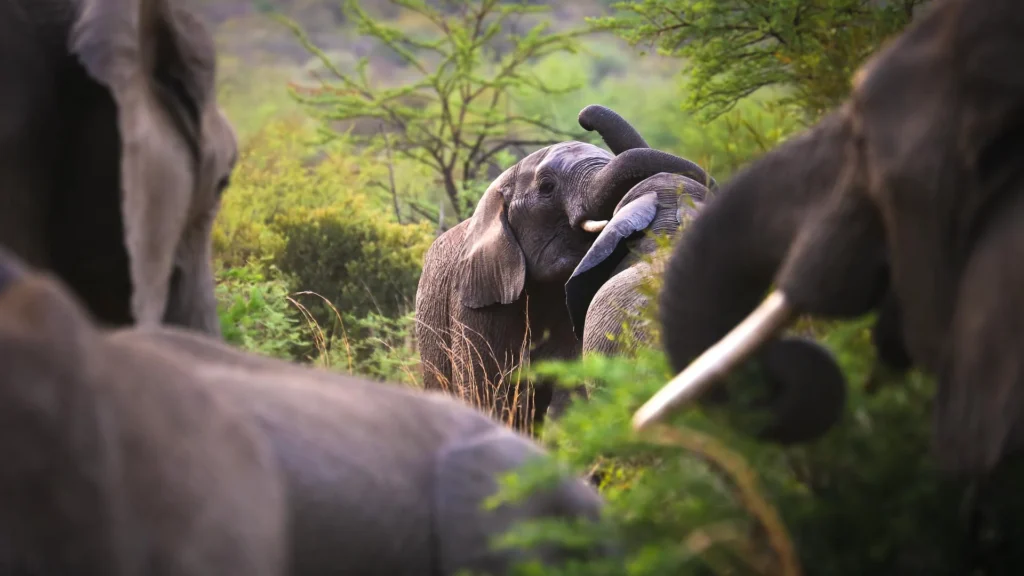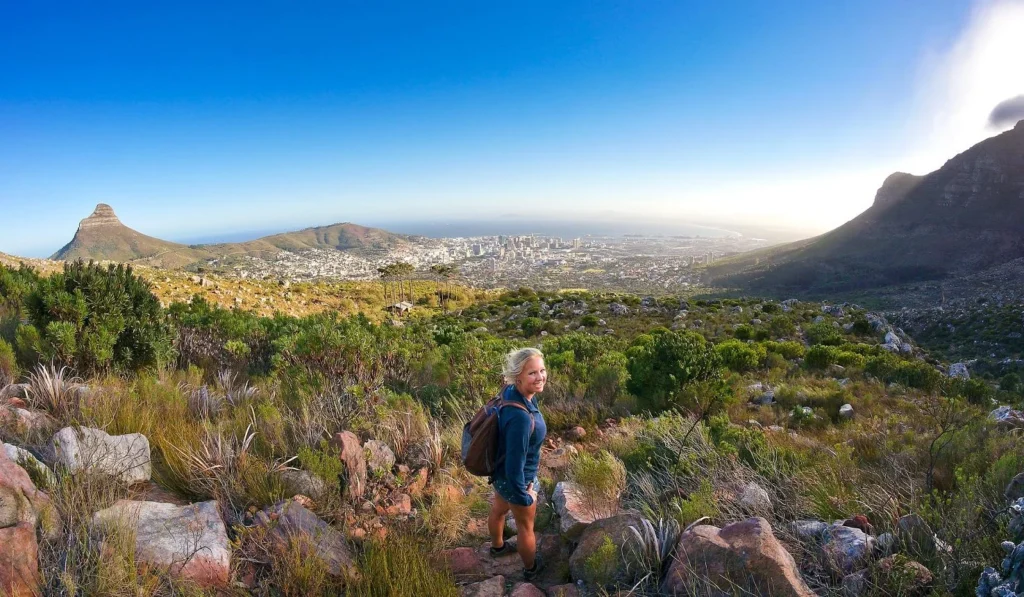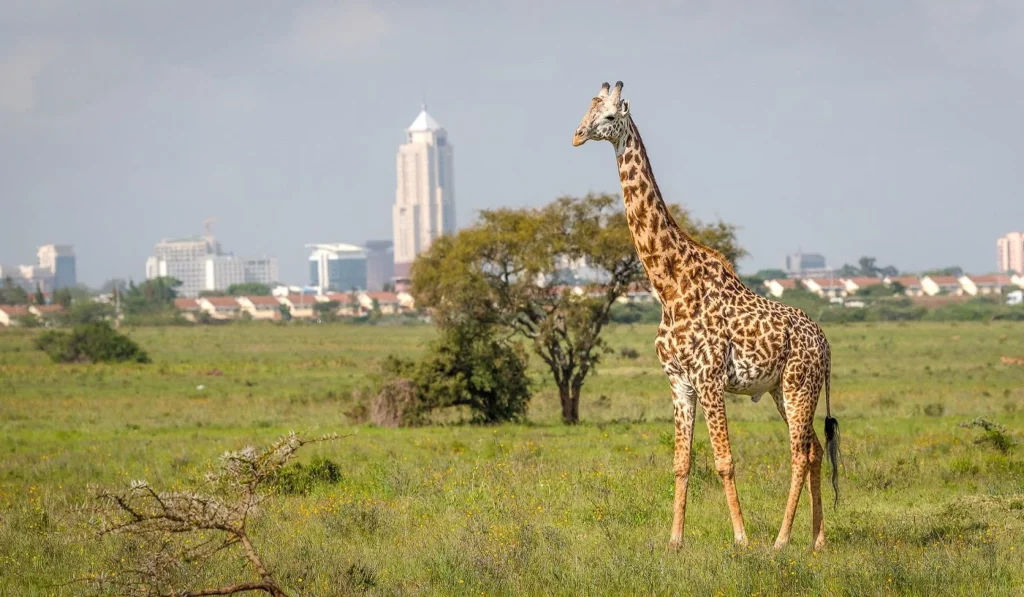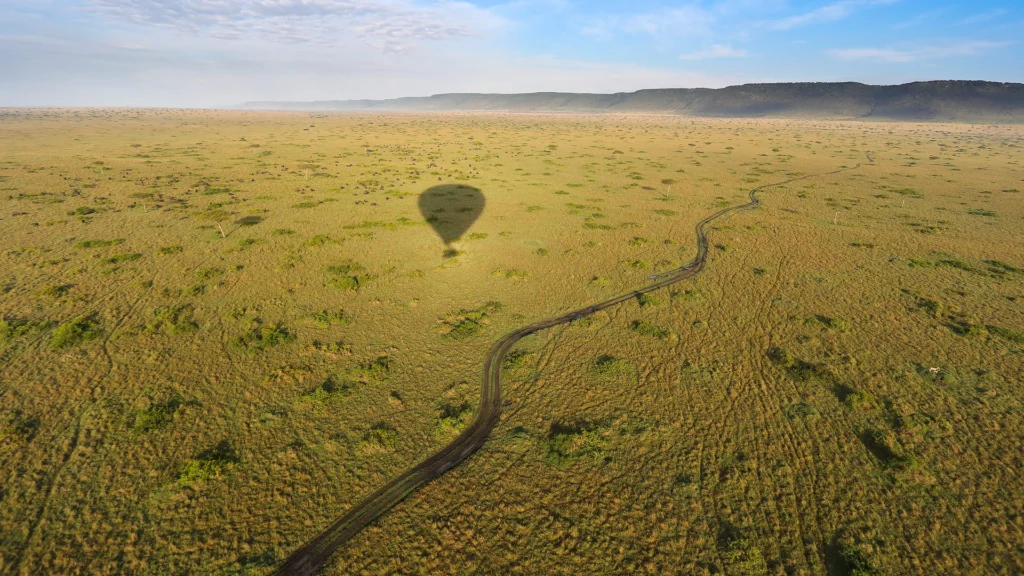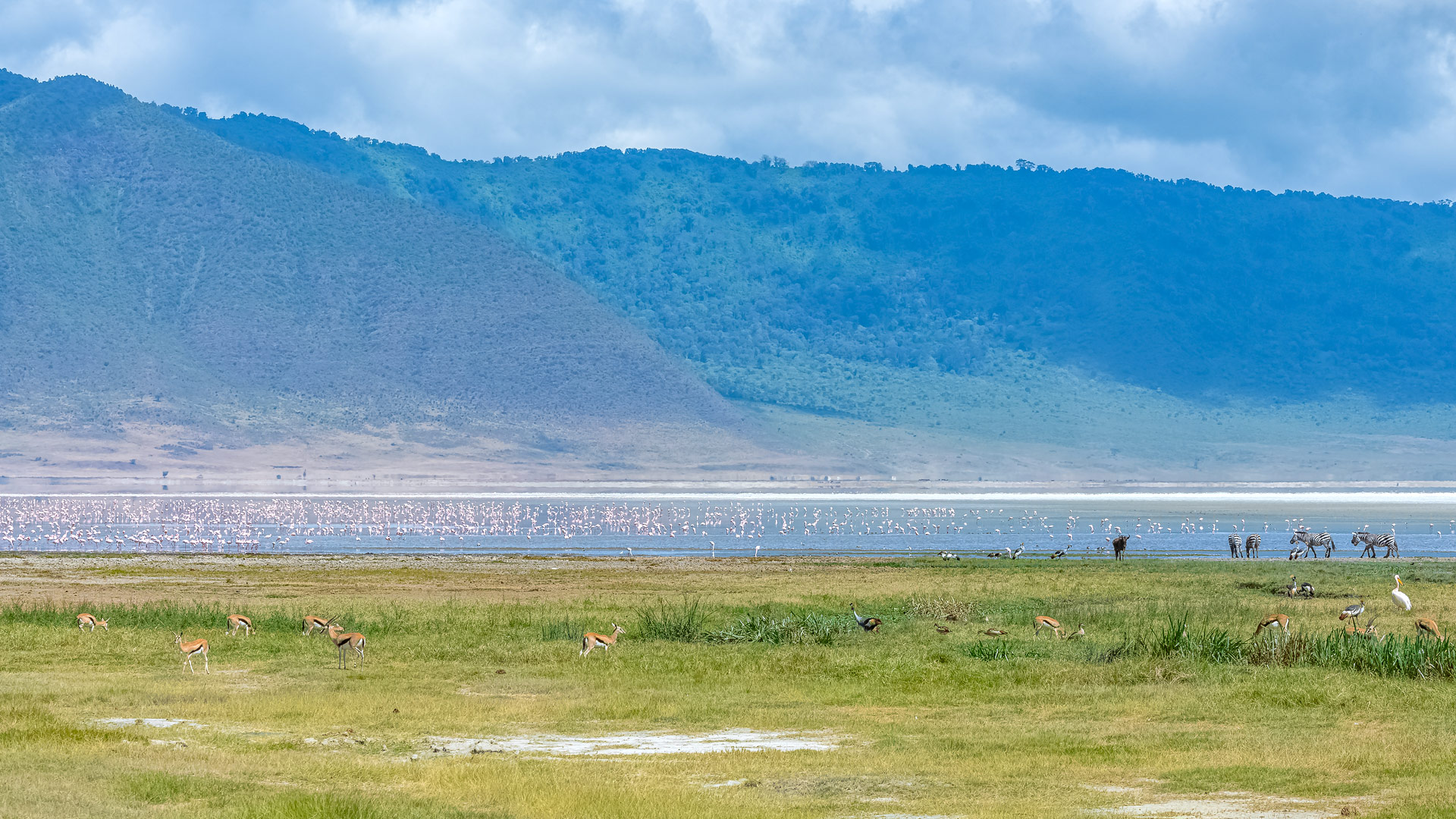
Safari to the Ngorongoro Crater
Ngorongoro Crater
is one of the most amazing
natural features on the planet
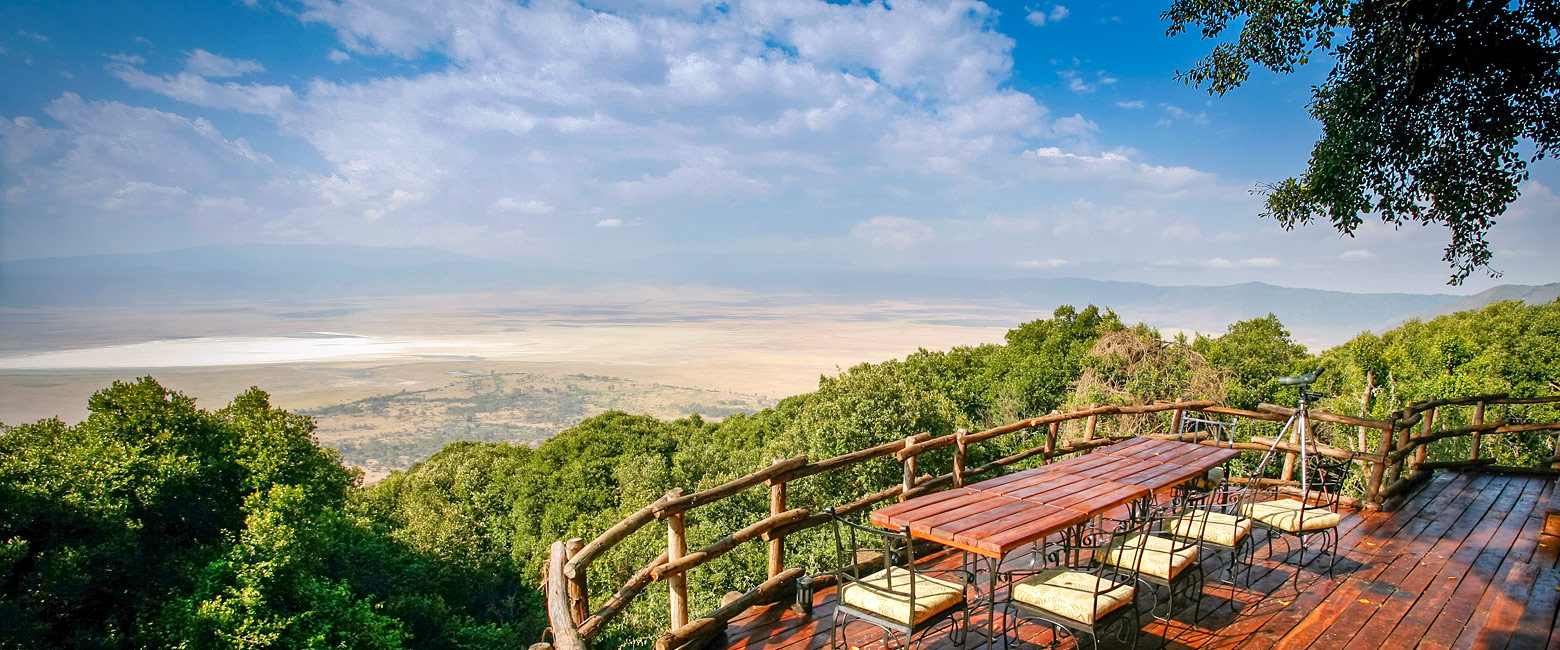
a stunning sideshow to the Serengeti
The Ngorongoro Crater is surely the most impressive geological feature in Africa, a truly remarkable sunken caldera which is home to a wide range of ecosystems and virtually the whole range of safari wildlife.
Around 2 million years ago a huge volcano, even larger than the present day Mount Kilimanjaro experienced a catastrophic collapse. During a cycle of low volcanic activity, the magma inside the volcano drew back, leaving a vast hollow, causing the mountain to implode and eventually settle into this vast flat-bottomed caldera, 20km (12 miles) in diameter and 600m (1800 feet) deep.
Over the years since, the floor of this great crater has come to host a wide range of habitats, the whole world of East African safari in miniature, with long and short grass plains, gently rolling hills, woodlands, marshes, soda lakes, freshwater springs and lakes.
There’s a huge range of animal species represented year round in the crater, including lions, leopards, cheetahs, hyenas, elephants, hippos and rhinos, plus a vast array of birds, including flamingos out on the sodorous central lake.
The crater also offers opportunities to see some species which are either absent or difficult to find elsewhere, including rhinos, large bull elephants, servals and bush-pigs. The only major animals not present are giraffes, which are not able to negotiate the steep trails down the crater walls.
It’s possible to drive down into the crater to explore this remarkable place, usually over the course of a half day.
There’s no accommodation inside the crater itself, but there are some good options on the Crater Rim and amongst the surrounding forests and mountains.
A visit to the Ngorongoro Crater is an integral part of a guided overland safari through this wonderful region. However it should probably not be considered the event, that honour has to be reserved for the Serengeti, but as sideshows get, you’d have to go a long way to beat this one.
It almost goes without saying that the Ngorongoro Crater acts as the ultimate bottleneck for vehicle traffic in this region, you really should not expect to have the place to yourselves. But if you’re prepared to jump through a few hoops, it’s still very much possible to have a relatively peaceful experience, even in peak season.
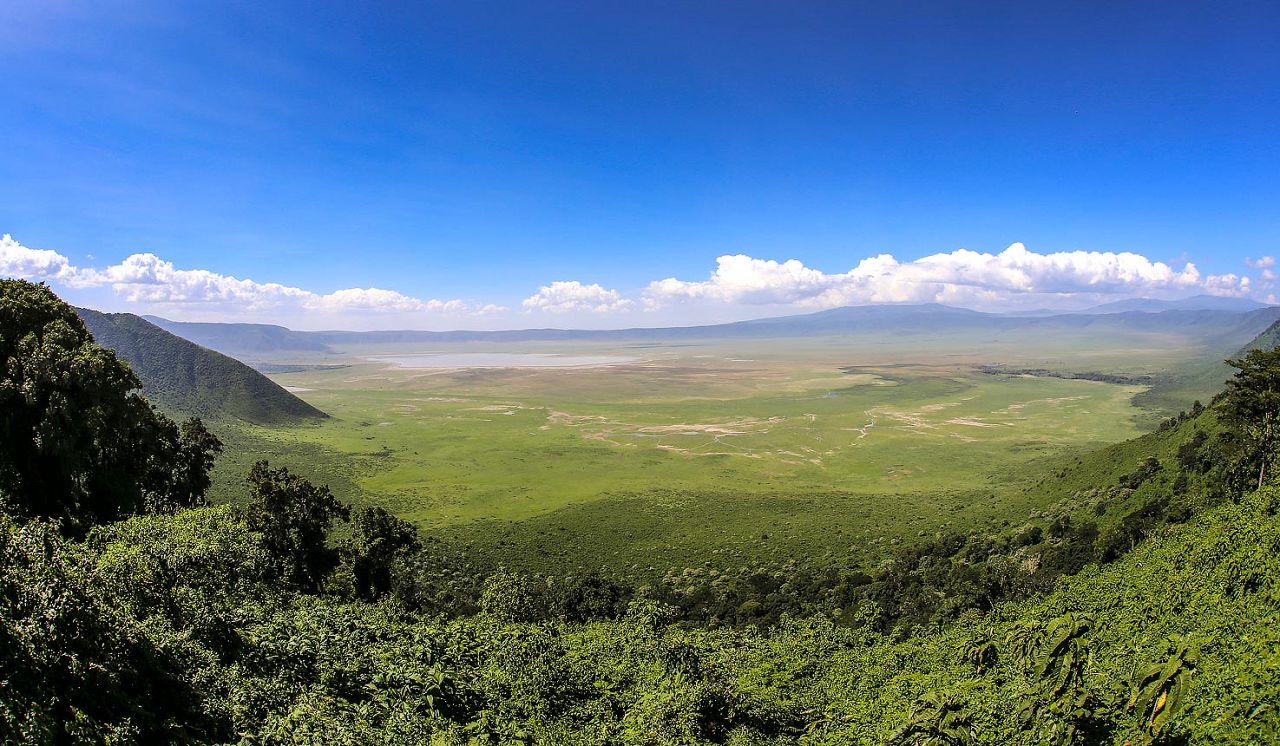
Gallery
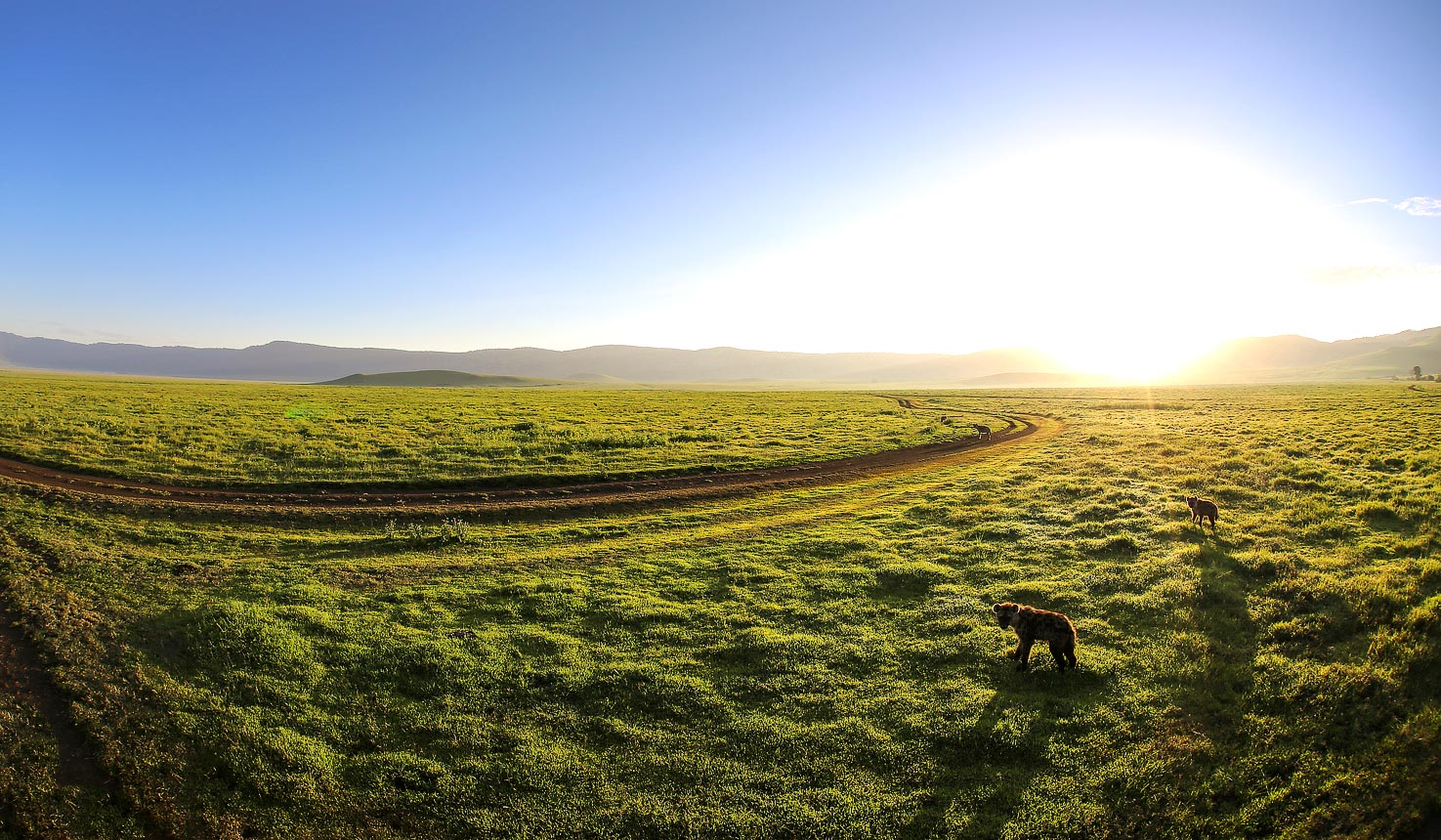
Video
Map
The Ngorongoro Crater tends to feature in almost all first time visits to the Serengeti region, but is often skipped in return visits due to the high traffic.
The usual stay duration is one night, occasionally two if guests want to explore the highlands more widely on foot..
Often we visit the crater when travelling by road between the Ngorongoro Karatu and Serengeti Southcentral areas, in which case trips may not include a night in this area at all.
Seasonality
The main factors which affect seasonality in Ngorongoro Crater are weather and visitor traffic. Wildlife movements are far less important than usual since most of the animals are resident in the crater year round.
The best months to visit from a weather perspective are generally considered to be Jun-Oct, although the early part of that season can be very cold at night.
Personally we find vehicle traffic to be the biggest single issue, so we prefer to visit during the quietest times of year, Mar-Apr and Nov-Dec. But even during the most busy periods it’s still possible to inject a fair amount of quality into a crater visit, we have our secret ways!
The bottom line is that you’re most likely to only be spending a half day inside the crater, so it’s arguably much more important to optimise your stay in Serengeti and live with whatever the crater throws at you.
Getting there
The vast majority of visitors to the Ngorongoro Crater arrive by guided overland safari, so they travel to their lodge and around the reserve in their private vehicle.
Around 20% of visitors to the Ngorongoro Crater arrive by light aircraft, almost always arriving into Manyara Airstrip, from where it is a 2-3 hour drive and staying at one of the high end properties on the Crater Rim. In this case they travel around the reserve with a vehicle and guide from their lodge.
Where to stay
There are three very distinct options for accommodation in the Ngorongoro Crater area …
The most obvious choice is to stay at one of the lodges on the Crater Rim itself, all of which have dramatic views. The best known property is the high end Ngorongoro Crater Lodge, although the much smaller Nomad Entamanu Camp is arguably more upmarket. The three big lodges, Ngorongoro Serena Lodge, Ngorongoro Sopa Lodge and Ngorongoro Wildlife Lodge, are considerably lower cost, but are all sprawling and rather dated.
If you definitely want to stay up here in the highlands, but are looking for something smaller and more authentic (without breaking the bank) then there’s a cluster of camps amongst the forests to the north side of the main crater. Amongst these Ngorongoro Highlands Camp (with its geodesic domed rooms) is the most architecturally innovative, whilst Lemala Ngorongoro Camp and Ang’ata Ngorongoro Camp are two traditional tented options.
However there is another option, one which is extremely popular amongst our guests. Instead of staying in this Ngorongoro Crater area, it is possible to stay either side and visit the crater on the way through.
The Ngorongoro Karatu area to the south has some lovely farmhouse style lodges which provide a great opportunity to experience rural Africa.
The Serengeti Southcentral area to the north is one of our favourite areas in the whole region. Both areas tend to be lower cost and have much more friendly climates too.
major traffic issues demand very careful planning
let us know your thoughts about Tanzania
and we will help you create the perfect safari
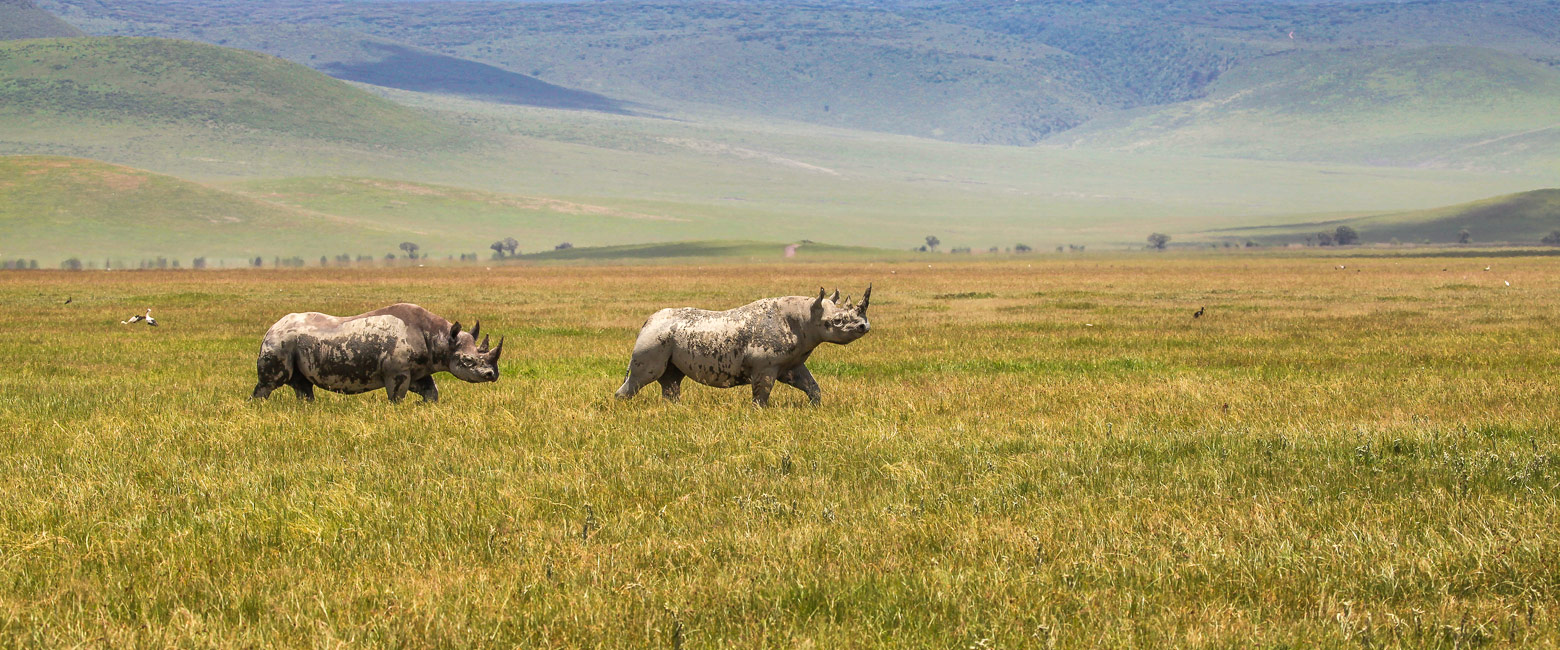
Extraordinary tailor-made adventures,
from earthy and edgy to easy and extravagant
From around USD 2500 per person, you set the ceiling
Sample Trips
Here are some of our popular trip shapes
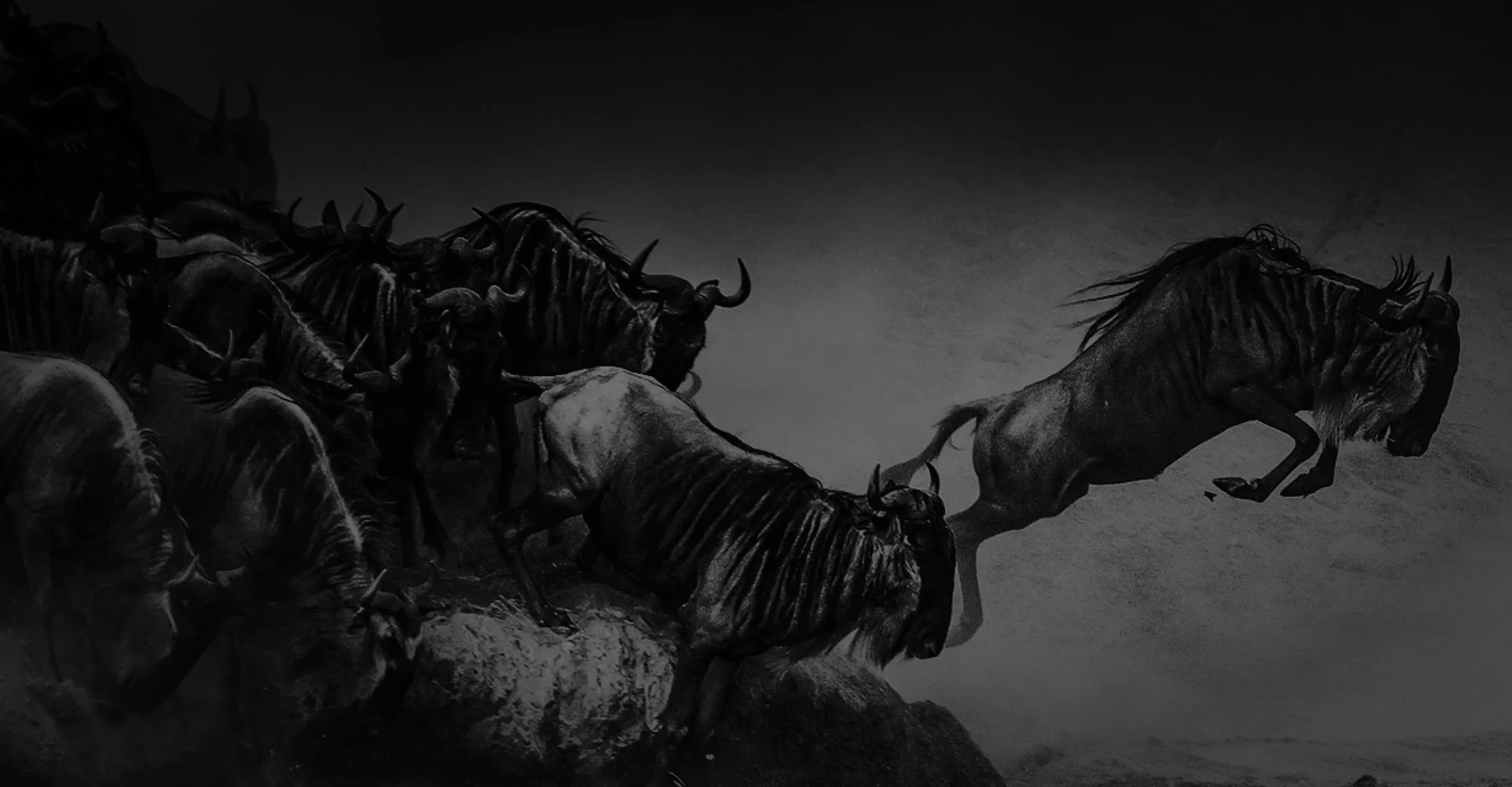
Get started on your trip
It’s never too soon to get in touch, we are here to help with every stage of your planning.
Best Lodges
We regularly inspect and photograph all of the the best lodges, to ensure that we always recommend the most suitable options
Key Locations
Take a look around related locations. Click ‘View more’ to explore locations further afield.





















